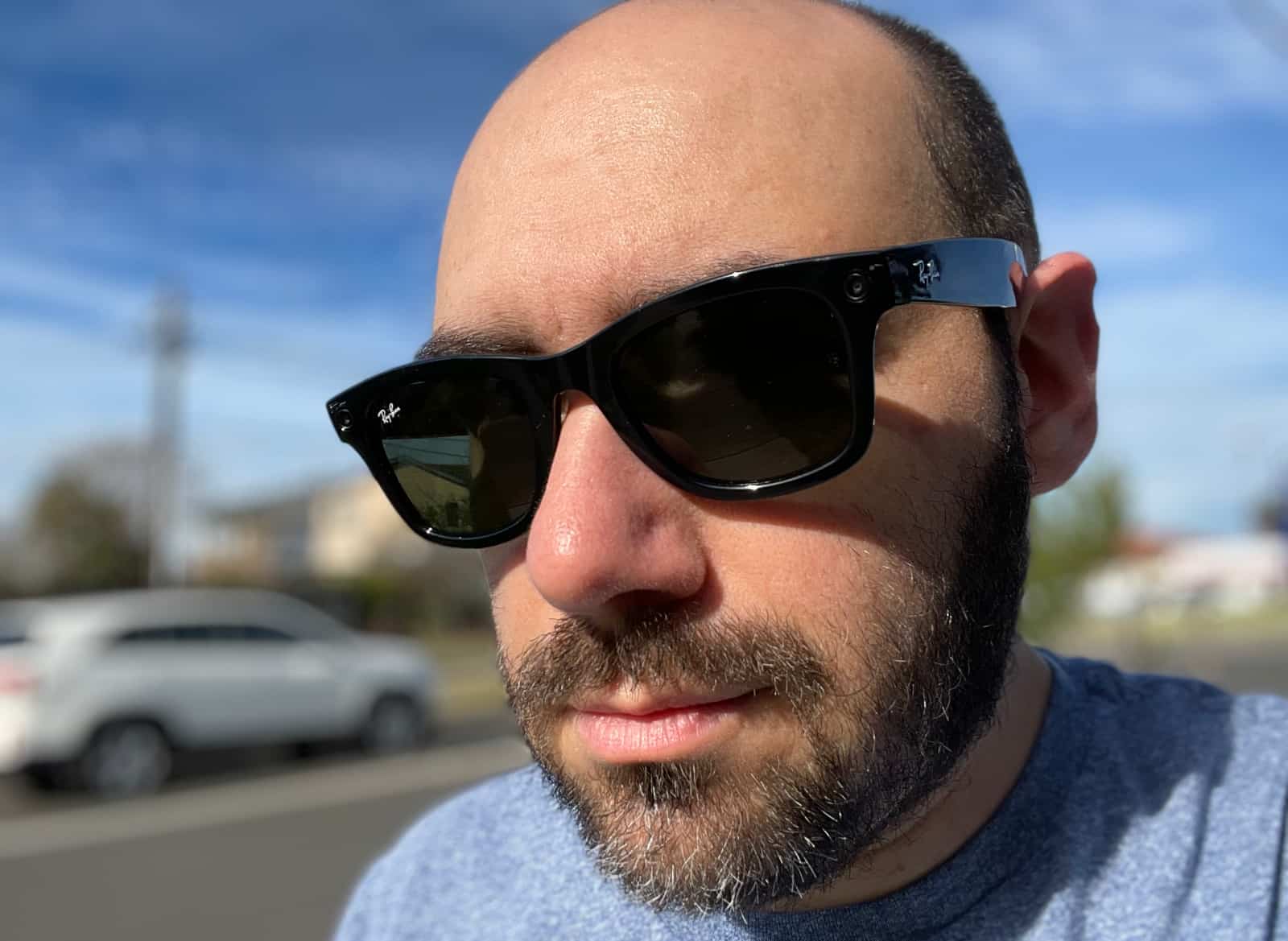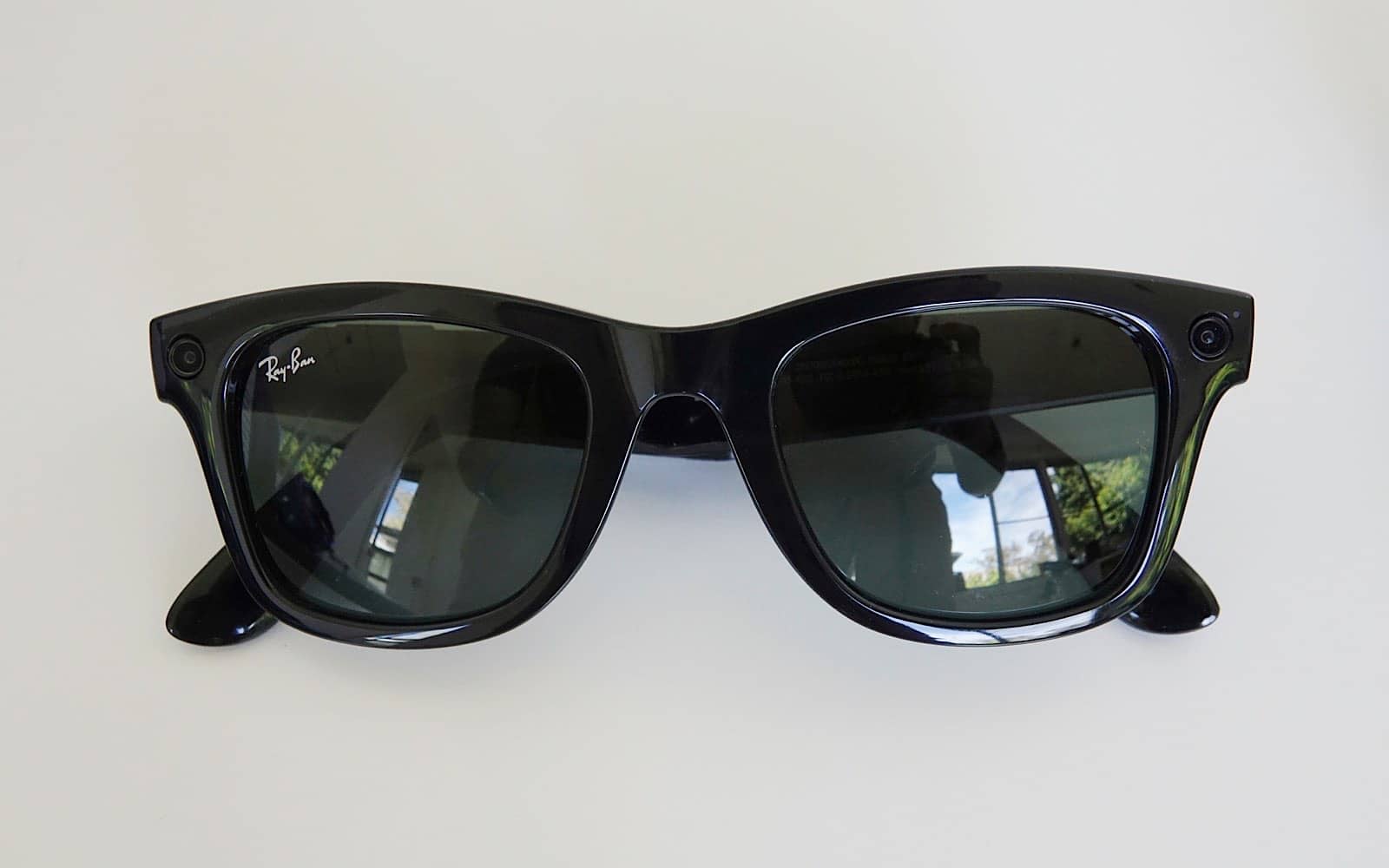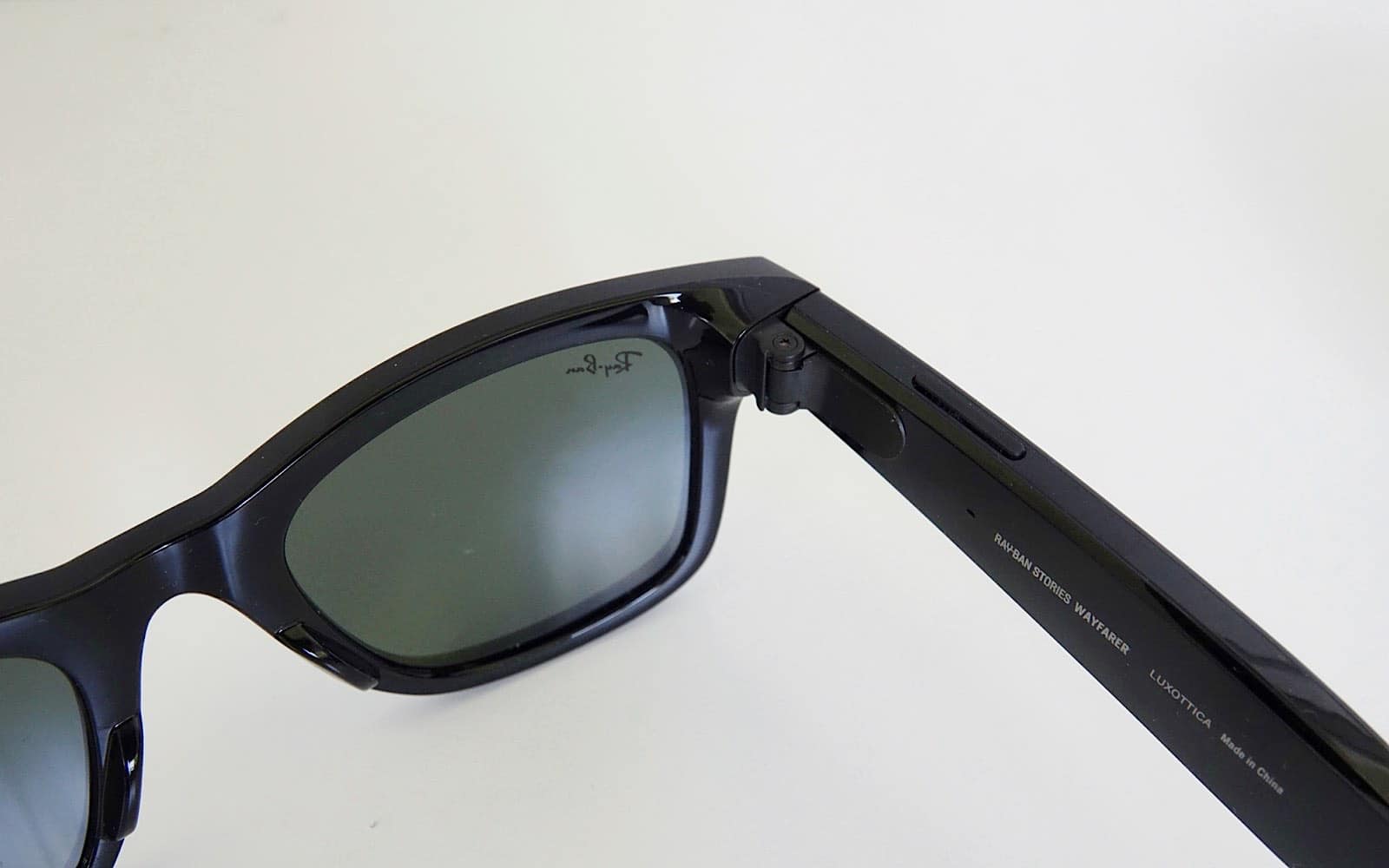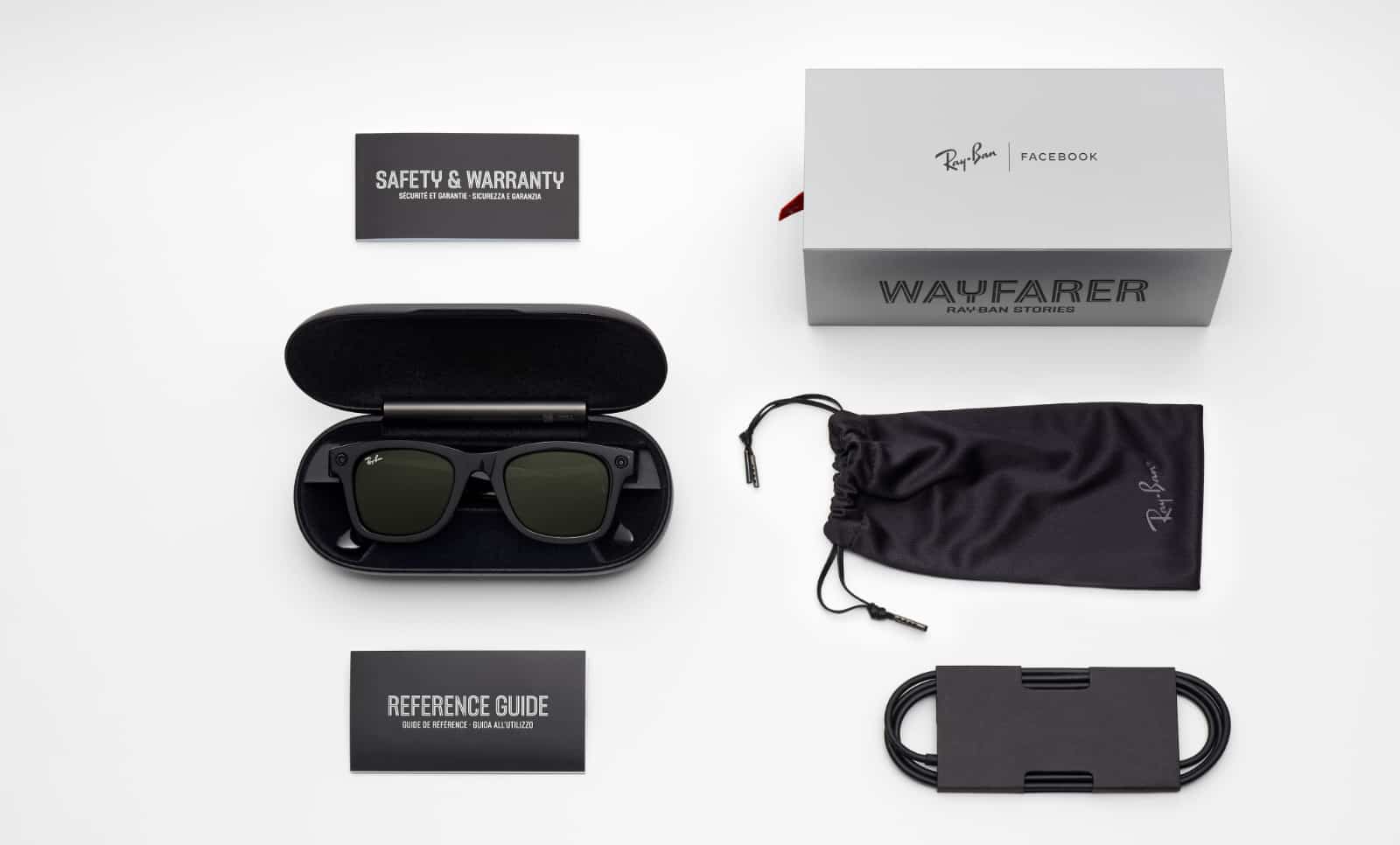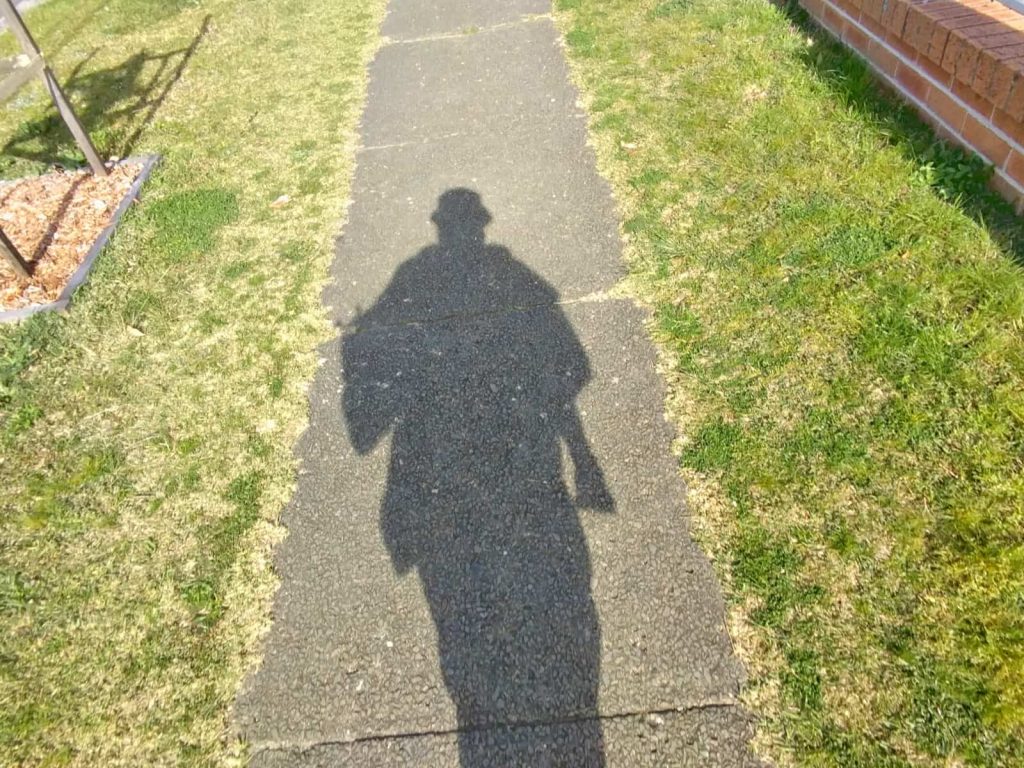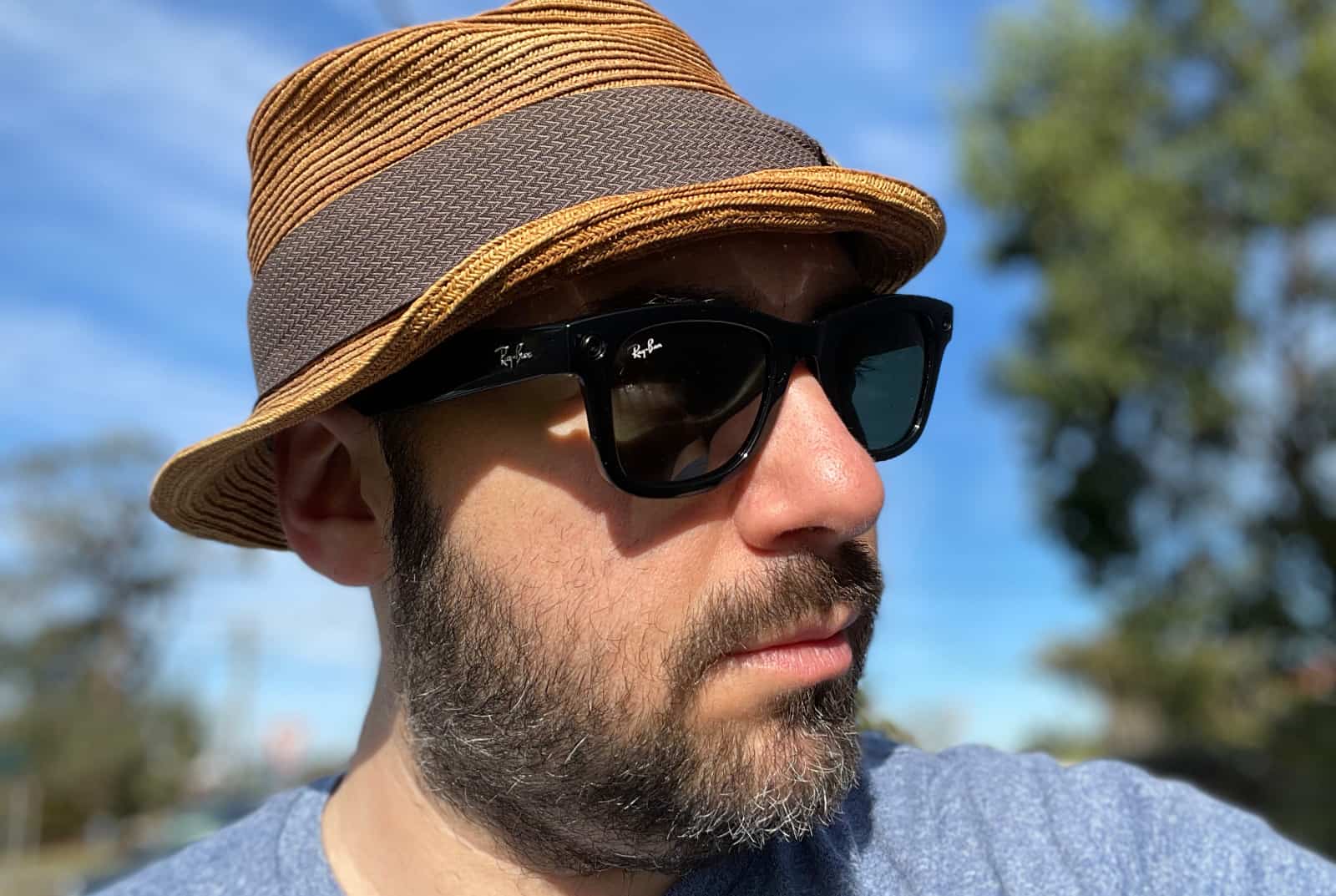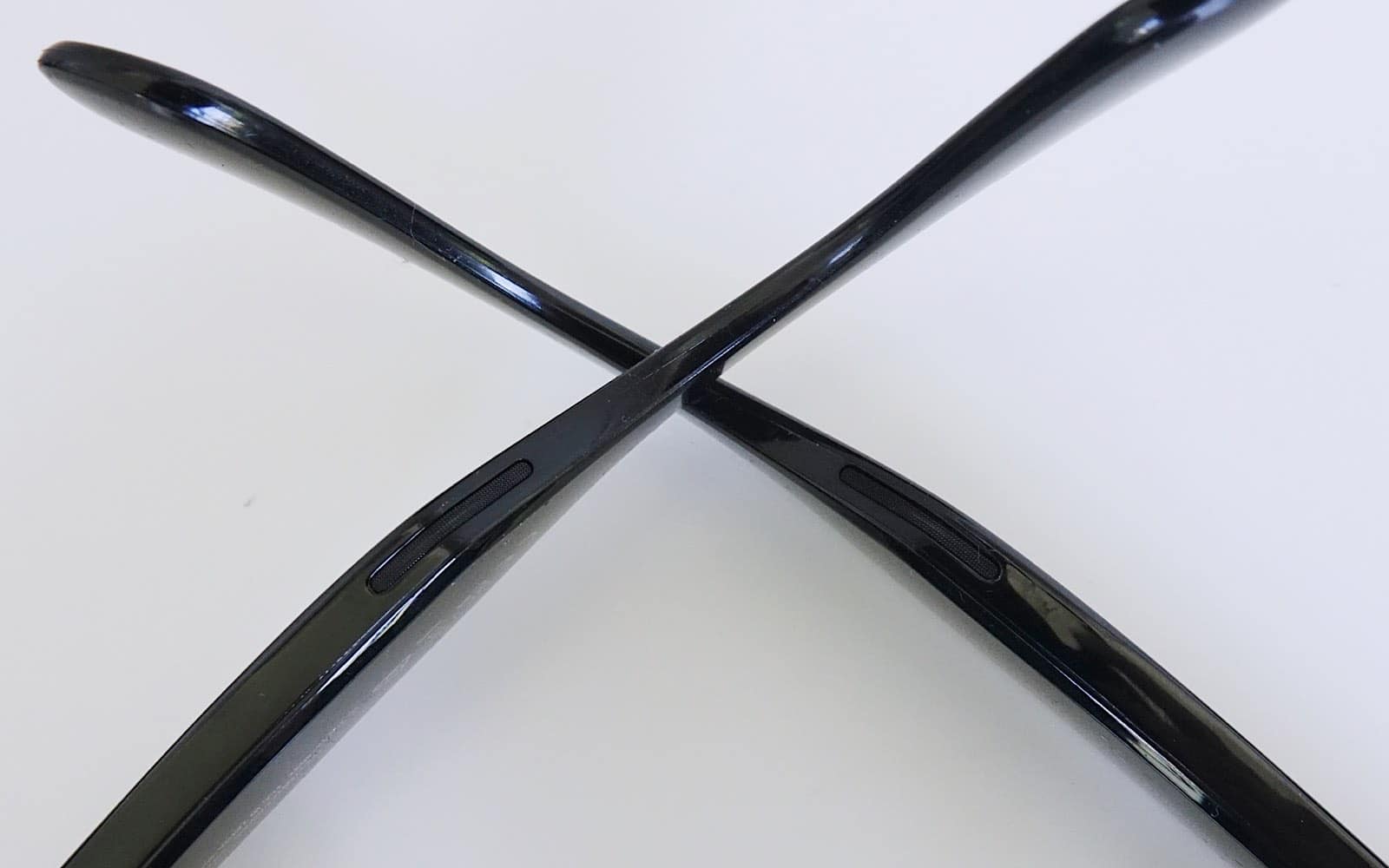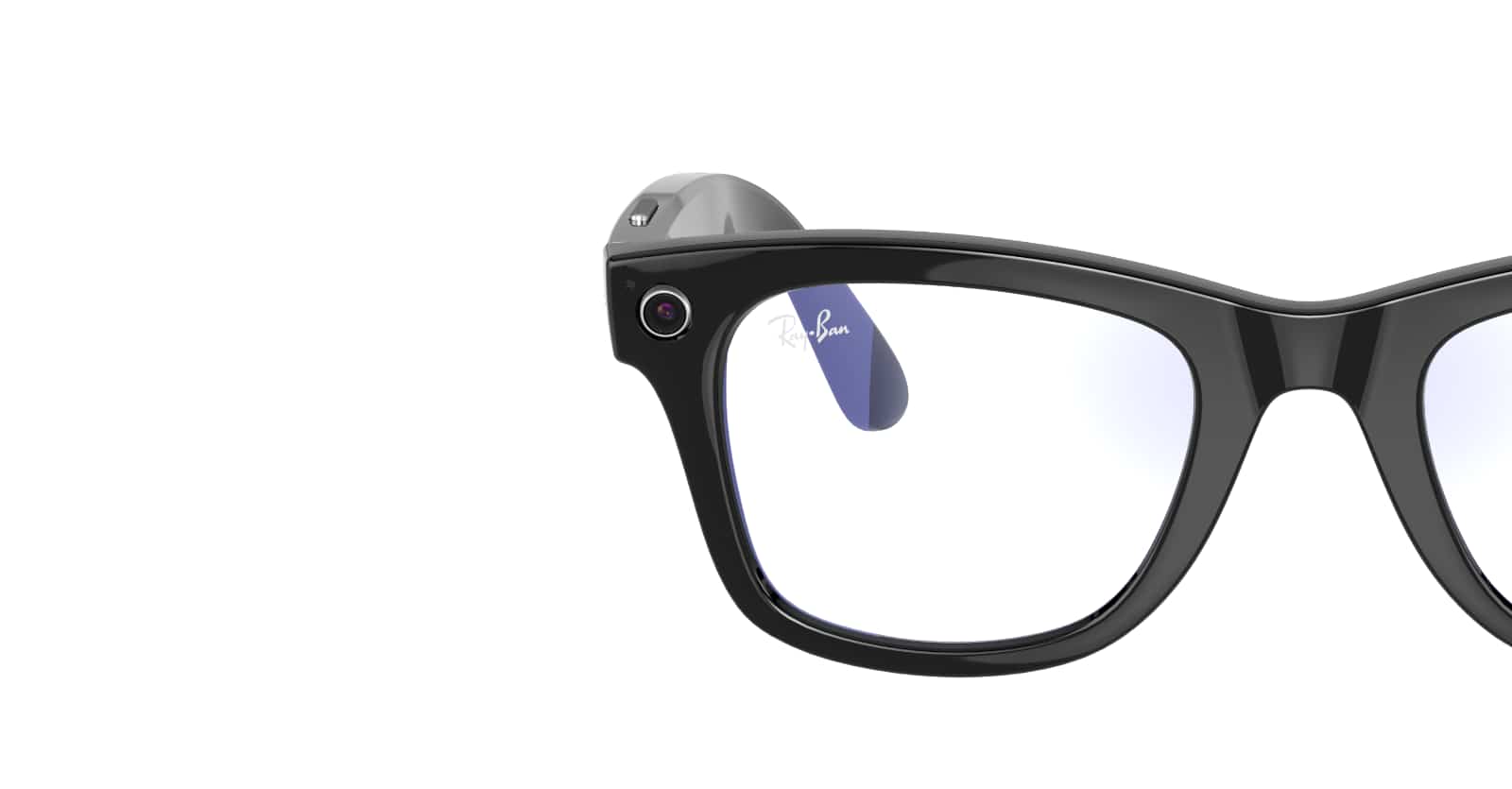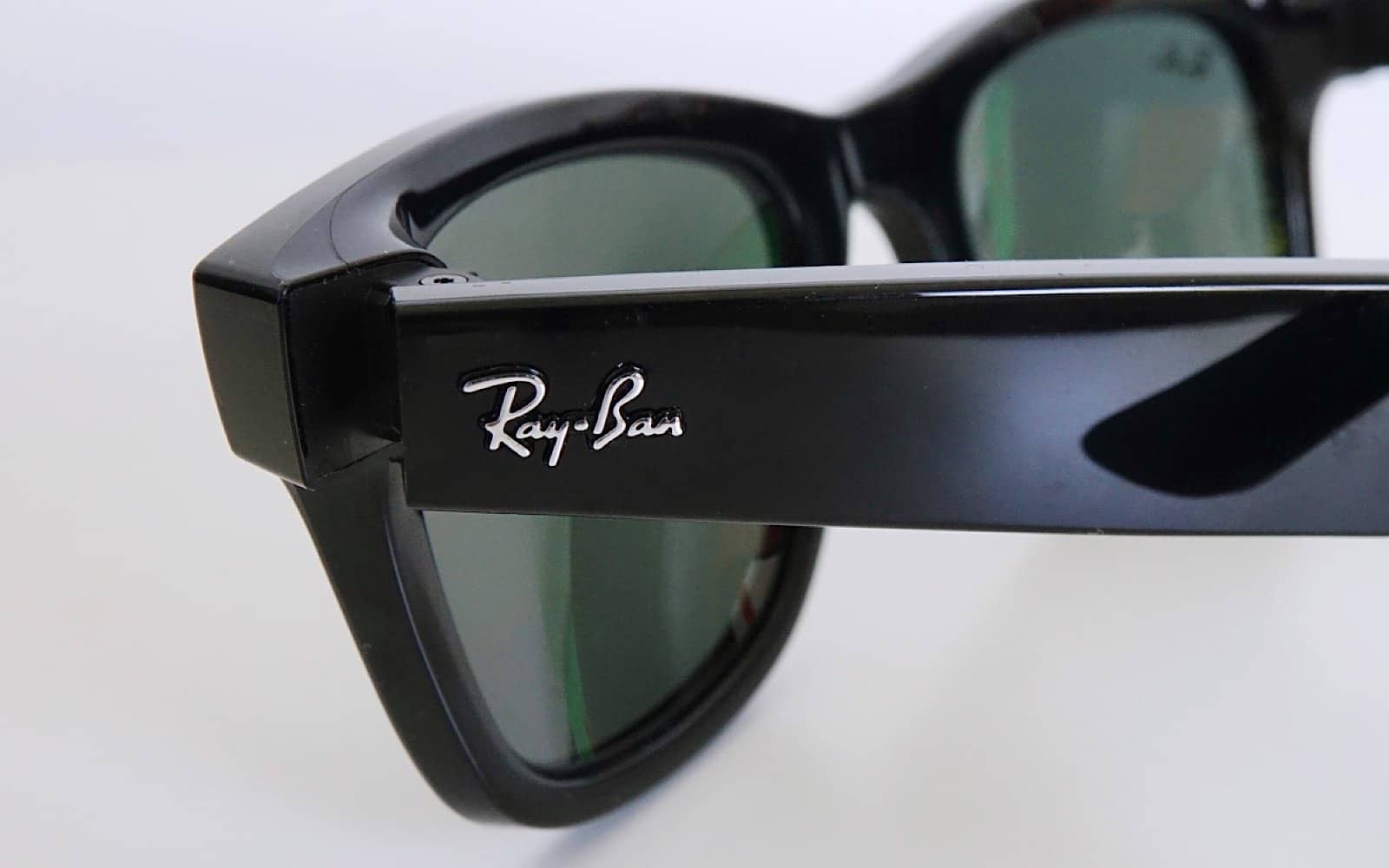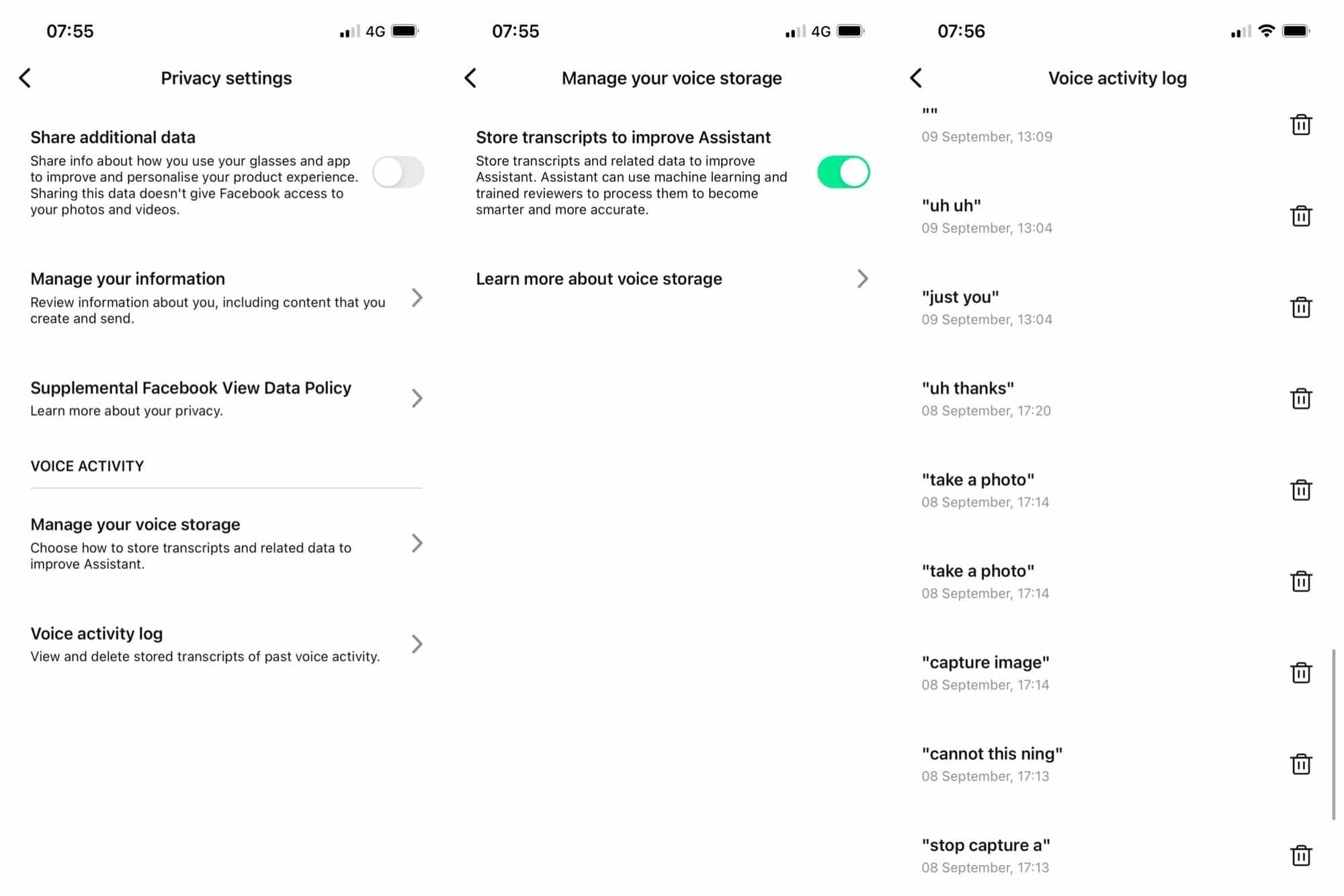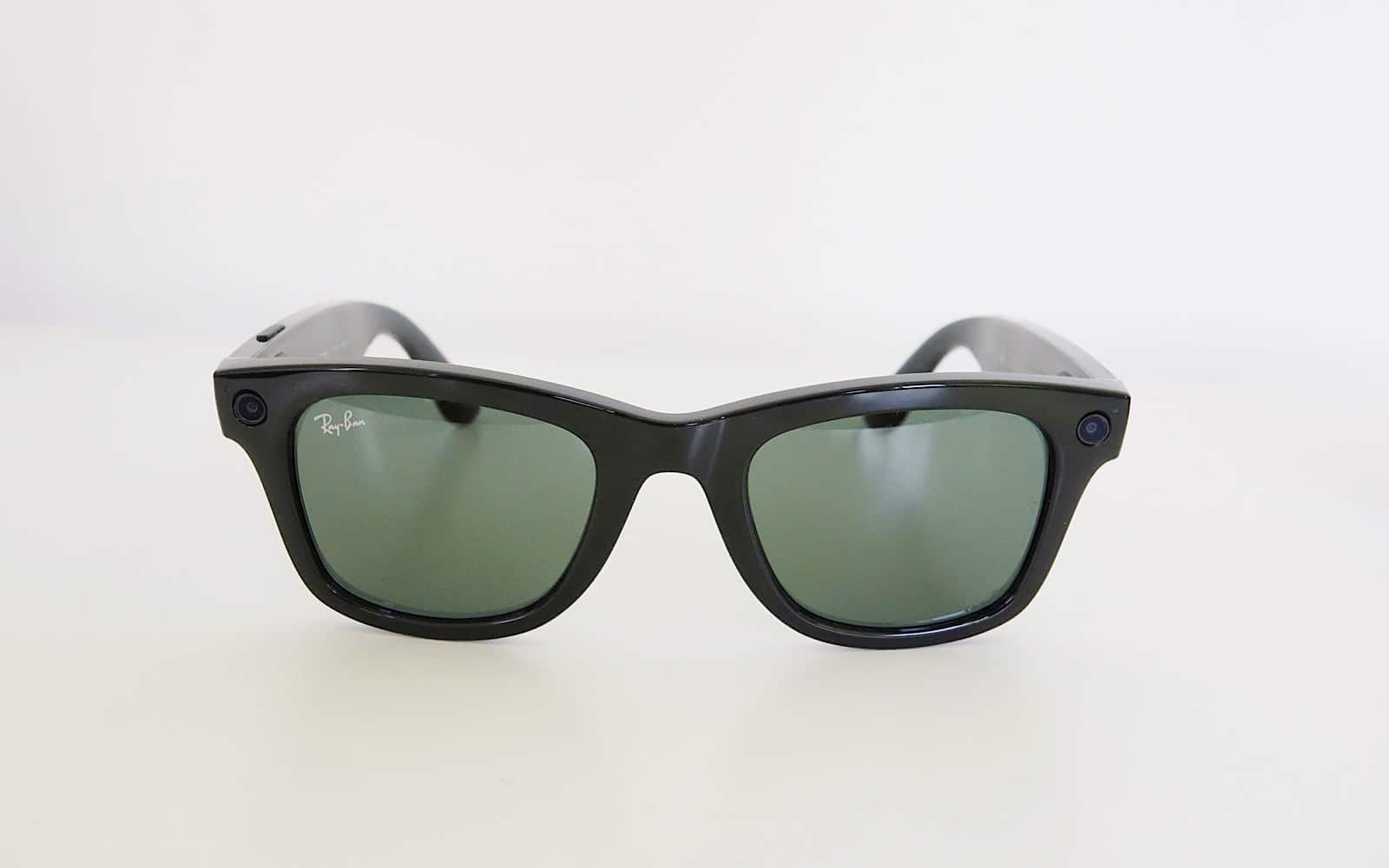Quick review
The good
The not-so-good
A pair of sunnies could just help you share the world exactly as you see it, beyond what your phone can do. Are the Ray-Ban Stories glasses the future Facebook wants us to embrace?
Science fiction can provide a great idea of where we’re going, but it can also deliver a fantastic form of inspiration for innovators. For instance, there’s transporter yet or food replicator from Star Trek, nor is there a lightsaber from Star Wars, but you just know a starry eyed engineer is gradually working towards all of these hopeful that they can change the world. And they probably will.
Not all science fiction has that effect. Some of it sits underneath the fabric of our culture waiting to make an impact. Some of it, like Strange Days.
You probably know Kathryn Bigelow’s directing work on the Oscar winning film The Hurt Locker, but over a decade before, the filmmaker presented a unique vision of a future we’ve gradually migrated to.
Back in 1995, looking to the end of the millennium was something people did, before we made the jump into the 2000s, which is where we’ve been for over 20 years. And back in 1995, Bigelow’s Strange Days painted a vision showing how we could live through people’s memories and physical sensations, bringing together technology with what we saw to let us recreate those feelings.
Even though Strange Days was a Fox film, good luck finding it on Disney+’s Star. And good luck finding it at all in Australia, with no sign of it on streaming services locally (at the time of publishing), while Blu-ray and DVD sales seem impossible to locate, as well. Instead, check the trailer below, which gives you an idea of what we’re talking about with a murder mystery weaved throughout:
It’s been years since we absorbed our brain with Bigelow’s and writer James Cameron’s vision (yep, that James Cameron), but the impact is still there: memories captured by a headset that could let you see through people’s eyes, and experience the world through their own, even fleetingly.
We’ve not really embraced that, though the way we all share content from our phones — which have largely become our eyes — suggests we’ve been gradually making our way to this way of sharing memories.
But Facebook might have something for it. More specifically, Facebook and an eyewear company, as one of the world’s biggest social networks teams up with a legend in eyewear.
Facebook and Ray-Ban have come together for the Ray-Ban Stories, a pair of glasses with cameras, microphones, speakers, and style, in the attempt to make storymaking and moment sharing a little more innovative than simply using your phone. Does it work?
What are the Ray-Ban Stories?
Developed in collaboration between Facebook and Ray-Ban’s parent company EssilorLuxottica, the Ray-Ban Stories are a pair of glasses that bring media capture and playback to the head, as opposed to just being in the phone.
On a technical level, the Stories glasses contain two 5 megapixel cameras — one for each eye, left and right — and a three microphone array with beamforming, built not only to capture video, but also listen out for your words. You’ll have a Facebook Assistant that you can control, talking to it so you can trigger the cameras, and that’s all it does.
Inside the glasses, there’s a Qualcomm Snapdragon chip and two small speakers at the back, while the glasses connect to phones using Bluetooth 5 and 802.11ac (WiFi 5), the latter of which is used for sending files from the glasses to your device.
Design wise, Ray-Ban has taken three of its sunglasses designs while Facebook has largely thrown its tech weight inside the eyewear arms, also replacing the silver accents of the front with two cameras, one on each side. There’s even a dot LED above the cameras and on the inside to let you know if the camera is active or what the battery life is like, handy because the lenses aren’t transparent screens.
There aren’t many buttons here, though, with a camera button up top, a power switch with a Bluetooth pairing slide on the inside, and a touch panel on the right sunglass arm supporting touch controls, such as pause and play (tap once), skip and rewind tracks (double trap and triple tap), and volume control (swipe forward or backward).
They even come in a really solid battery-equipped hard case that feels more deserving of glasses than the simple spot of fabric you might be expecting.
More of a capsule container, they offer a USB Type C port at the back for keeping the case battery topped up, and provide what is basically a foolproof way to store sunglasses in a box, using small magnetic pins to hold the Stories in on one side and keep them charged.
What do they do?
The first gadget we’ve seen like this made for the general consumer, the Ray-Ban Stories presents a view of the world where sharing from the eyes is made real.
Using them is pretty easy: connect a pair with either an iPhone or Android phone and use the Facebook View app to have them talk to each other. From there, either call out to Facebook’s version of an assistant “Hey Facebook, take a photo” or long press the one button up top, or call out “Hey Facebook, take a video” or use a short press to that button to start recording as much as 30 seconds of video.
That’s it. That’s how you use the Ray-Ban Stories. Press your buttons, capture your images and video, download it to your phone, and then share your stories. It’s that simple.
You can do it without your phone nearby as well, with as many as 30 videos or 500 photos stored in the glasses before you need to download them, meaning they’re handy to have on you even if you don’t have your phone. And even when they’re in the case, you can download from them, provided they’re switched on.
How does it look: what do the Ray-Ban Stories provide?
Take a few shots and you’ll be treated to either a small square video or a rectangular image, but how you choose to crop them is up to you.
In video, we found the right camera fired most of the time, capturing up to 30 seconds of square 1414×1414 video, marginally more than HD but not by much, while the images delivered a 5 megapixel photo with a resolution of 2592×1944.
Video results are acceptable but not amazing, with the video able to be edited into a short 15 or 30 second montage, like we’ve shown below.
With images, the results are a little better, producing pictures that are bright and clear enough in daylight, though don’t offer a lot of depth of field, and may be a little like what your phone can do, but without the extra megapixels or solid glass.
This isn’t a competitor to a Leica, and won’t beat your iPhone, but the results are definitely good enough for sharing, and provide a different view, with your hands often getting in them because they’re not holding a phone anymore.
You can also tweak the pictures and videos with effects and edit results into a montage, plus there are some “3D” styles for animating imagery if you choose to, though we couldn’t get the 3D camera style to look properly 3D in our tests.
There are two cameras here, with Facebook noting that a video is captured alongside an image, so presumably that’s what the second camera is for, but in our time with the unit, we couldn’t make the 3D really come across in any meaningful way.
However capturing images and videos isn’t all the Stories are built for.
The Ray-Ban Stories are also earphones, or more specifically, open audio speakers. That’s a type of technology few really play with, providing close range speakers aimed at your ears and your ears alone. It’s a type of speaker built to be more like an earphone, so you can hear your music and talk on the phone, even if no one else nearby can.
And that’s the technology in use in the Ray-Ban Stories, similar to what Bose used in its first-gen Frames Alto and Rondo audio eyewear, following it up in the Frames Tenor, Tempo, and Soprano sound-specific sunnies.
It’s not the same tech, though, and you can hear why.
Tested with the Pickr Sound Test (which you can listen to for yourself), bass is close to being absent, with plenty of highs and mids with a surprisingly solid sense of space and soundstage, but the sound lacks the punch in the bottom.
Less bright and more flat, the Ray-Ban Stories deliver a type of sound that gives you a backing track for life and walking around, but doesn’t offer the sort of dynamism we usually turn to earphones or headphones for.
In Tycho’s “Glider”, the bass drop we look for in the beginning of our playlist is missing in action, as is the punch from Daft Punk’s “Contact” which feels more subdued, almost as if it has been directed to stay in the background. It’s much the same in the pop of Carly Rae Jepsen, Ariana Grande, Mark Ronson, Muse, and so on and so on. In fact, we had to play our bass-specific playlist to pick up on much of the absent bass.
If your music normally moves bass to the next level, you’ll hear it a little better, but it won’t be the punch you expect, rather more of the flat sound without as much impact.
That “flat” sound is something you can hear in the bass drum and bass line of Rage Against the Machine’s “Take the Power Back”. If you know the song, you know the intro, but the punch and attack of both are lost when heard through the Stories’ take on open audio.
The sound quality isn’t bad in the Ray-Ban Stories, but it’s nowhere near the level you’ll find in any other pair of earphones, providing a decent highs, acceptable mids, and some delivery in the bottom end but not much of the attack you might crave.
It’s good enough for giving you a personal soundtrack while you handle your every day life, and fine for listening to podcasts, but will they replace your earphones? Probably not.
Clearly, the main point of the Stories glasses is to capture your world and share it to social. Audio seems like a fun extra they can handle, because why buy a pair of sunglasses with a camera in when they could also cover sound at the same time.
What does the Ray-Ban Stories eyewear need?
But as fun as a pair of glasses to capture your world can be, and as useful as we’ve found smart glasses to be as a pair of earphone-less earphones, there are things Facebook and Ray-Ban need to do to make these better, particularly for version two.
One of them is to work with a sound company, or work out the sound issues itself.
Ahead of the launch, Facebook told Pickr that it hadn’t worked with a sound company on its Stories eyewear, and it kind of shows: while the highs are solid and the mids noticeable, the bass is largely missing in action, and not as strong as what you can find from the other major player in eyewear audio, Bose. Now two generations in, Bose’s open air speaker system found in the Tenor is clearly much, much stronger, and while the bass isn’t massive, it’s much more developed than the total absence in the Stories.
While the Ray-Ban Stories aren’t made specifically for sound, they can be used for it. Yes, you get a camera to capture life’s moments in a stylish package, but you can also use it to talk to people and listen to calls, music, podcasts, and more. But if you’re expecting any semblance of bass, you’ll be a touch frustrated with what’s on offer.
Likewise, there’s no water resistance, so if you get caught in a spot of rain or splashed at the beach or pool, don’t expect the Stories to shrug it off. While pretty much every pair of sunglasses will be water resistant, the electronics-infused Ray-Ban Stories are not built this way and may end up being problematic like a Gremlin if they get wet.
And while we’re talking about some of the issues, let’s touch upon some of that capabilities that could be a little improved.
For instance, you get two cameras to capture from, but no support for 3D stereoscopic imagery or video. That might come across as jargon-laden, but it’s the very thing that gives you three dimensional media, handy if you still have a 3D TV (and use it), or more likely if you’ve made the jump to VR, which Facebook has its Oculus platform for. It’s a little surprising that no VR support is included, even though there are two cameras and Facebook clearly has invested heavily in VR with Oculus.
Interestingly, we found the right camera would fire every time, and not so much the left, leaving us with little explanation for what the left camera on the Stories did.
Add to that not being able to record for longer than 30 seconds and you have a bit of a limitation on the media you record, small as these issues are.
They could be changed over time and unlocked as features, something that wouldn’t surprise us given the evolving nature of technology. It’s highly possible the extra tech is there now and could be opened later with an update, but at launch, Ray-Ban’s Stories are glasses for people that want to record their life’s small moments and aren’t too fussed with listening to bassy tracks.
Are the Ray-Ban Stories worth your money?
Starting at $449 in Australia, that might be a hard ask for some.
While sunglasses aren’t necessarily “cheap”, the Wayfarer Classic without technology our Stories review unit is based on is typically closer to a $200 recommended retail price, but can be found for around the $100 mark at street pricing.
Double the RRP or quadruple the street price and you roughly have the cost of the digital equivalent, the Facebook Ray-Ban Stories. That’s not exactly a small cost for some, especially when the point of donning sunnies is to both protect your eyes from the sun and look stylish. You can reorder the importance of those however you wish.
Of course, that’s not really the point of the Ray-Ban Stories. Rather, they exist to make your life a little easier, and possibly a little more fun.
Armed with two cameras and three mics, they become worth the price if you’re an avid sharer and want something that displays your point of view in a way only your eyes can. The sound quality isn’t on Bose’s level, and so slightly exceeding the $399 price of Bose’s eyewear means you’re not paying for the sound, but rather the flexibility.
While the sound isn’t as strong, Facebook’s and Ray-Ban’s Stories eyewear is more versatile in what it does because you’re getting more than just audio, but also a couple of cameras, as well, and the ability to share without using your phone.
We’re not sure that necessarily makes the Ray-Ban Stories worth the price at $450, but they can read as better value than Bose’s offering, and even include a proper name brand behind the eyewear, complete with the Ray-Ban logo that on the top left of the lenses.
What we loved about the Ray-Ban Stories
And yet we came away from this first-generation product more impressed than we expected. They are surprisingly fun, and easy for anyone to really get their head around, and even behind.
If you’re a parent trying to capture moments of your child, you know all too well how difficult it can be to get to your phone in time to take a picture or video. Ray-Ban’s Stories get around that, because provided you’re wearing them, they’re ready to go. Press the button or call out to Facebook to capture a photo, no hands needed.
Emphasis on the “no hands” bit, too: all our four year old had to do was wear the glasses and copy what we were saying — “Hey Facebook, take a photo!” — and she was able to capture photos from a pair of sunnies. They’re so easy to use, a child can do it.
We’re also big fans of the fact that Ray-Ban was involved, not because we like the brand, but because they help legitimise the idea that smart glasses can be made by brands that normally make eyewear. As much as we love the Bose Frames, they never really had the heritage or style of eyewear working for them, only for the sound.
Smartglasses kind of need both, and is a little like expecting a headphone company not known for sound to suddenly make amazing game changing tech. LG works with Meridian Audio, Samsung bought the Harman brands and uses AKG in its tech, and Nothing is working with Teenage Engineering, all to produce better sounding gear, tapping the talents of sound specialists to improve their hardware.
By having Facebook work with Ray-Ban for what are ostensibly Facebook’s breed of smartglasses, the social media giant has seemingly found a way to legitimise the idea that smartglasses can come from an optics brand. And that’s not a bad thing, from the classic design right down to the “RB” etching on the right lens to signify these really, truly are Ray-Bans.
What we’re concerned about: privacy
The “bad thing” in the Ray-Ban Stories may come down to the obvious elephant in the room, even if it’s one that won’t appear through the cameras specifically: privacy.
Facebook has a rather spotty record when it comes to the area, and unsurprisingly, the Stories need Facebook to set the whole thing up. You don’t have to share videos on Facebook to play, but you will need Facebook if you want to use the glasses.
That mightn’t be an issue if you trusted Facebook, but in the past decade, many people don’t, and for some pretty good reasons.
Facebook does say the Stories were “designed with privacy in mind”, complete with the LED that lights up when a photo is being taken, and settings inside the Facebook View app to let you choose whether you’re sharing extra data with the company. There’s even a specific part of Facebook’s website exploring the privacy features of the glasses, something you don’t do unless you know your target market is concerned. It covers the idea that your videos won’t be accessed with our your consent and that it won’t use the videos for personalised advertisements, among other things.
Our guess is that one of the benefits of working with Ray-Ban and its parent company, EssilorLuxottica, is that it has Ray-Ban on the lenses and glasses alike, so the risk of seeing “Facebook” on the hardware and having trust eroded is slightly diminished.
Given the amount of audio and video being captured by the Ray-Ban Stories, we’d be surprised if Facebook doesn’t plan to use some of the information for its wealth of data in the future, whether or not you plan to share it. You can, of course, turn off app tracking, but Facebook View’s privacy information on the App Store suggests more or less everything is linked to Facebook in some way, including browsing history, financial information, product interaction, audio data, and so on and so on. This could all be your standard boilerplate stuff, but it also might not.
That’s part of the problem, though, and makes the Ray-Ban Stories complex. They’re so easy to use, a four-year old can get it, but not so easy that she can understand the potential privacy concerns.
Yay or nay?
All of this leaves us with a mixture of feelings on Facebook’s first attempt for the face. These are a lot better than we expected them to be, and while they are a gimmick, the Ray-Ban Stories are a genuinely fun gimmick to play with.
We don’t know if either Facebook or Ray-Ban were inspired by science fiction, but we wouldn’t be surprised if someone on the Stories design team has seen Strange Days. There’s definitely a feeling that you’re capturing personal moments to be shared and is a theme used in the film, distinct to the use of Mini Disc which is clearly no longer a thing anymore (sad face).
It’s this idea that will be easy to connect with for those who are social, and who want people to experience life through their eyes. And that’s no mean feat, either, though these glasses make it somewhat possible, even for 30 seconds at a time.
Your eyes may well be the window to your soul, but Ray-Ban Stories affords others the opportunity to peek through those windows and check out what you’re doing, provided you’re comfortable with the whole thing.
In their first generation, there are your typical first generation issues. They should be water resistant (even ever so slightly), the sound could be improved, the quality could be a little better, and privacy is a big old question mark, but by and large, we can see this working for people out there.
If you are a fan of Facebook and sharing, and wish it could be so much more seamless, Ray-Ban Stories is a neat addition and a fun way to also protect your eyes.
They may as well be sharing made modern. If you’re into that, Ray-Ban Stories is a cool idea worth checking out.



